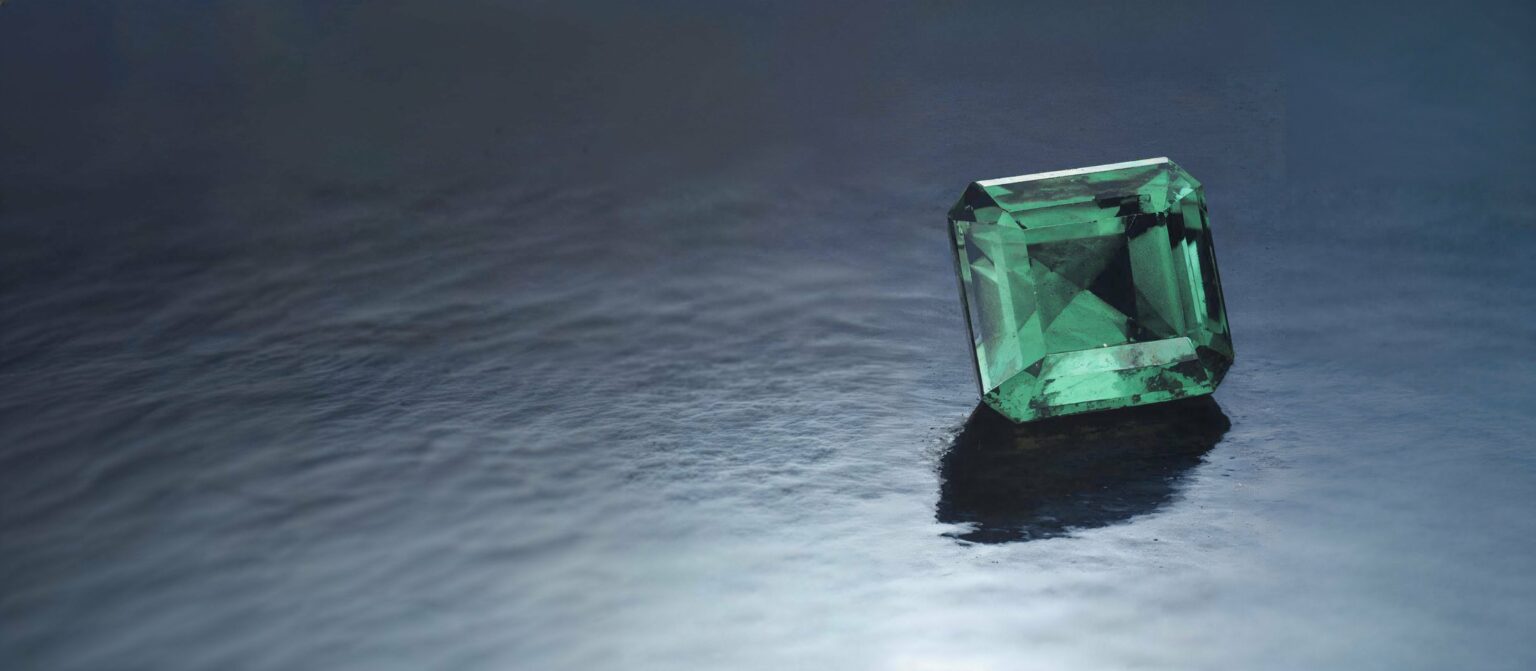Late in the 1970s, when ads hawking emeralds for $5 apiece started appearing nationwide, gem dealers weren’t sure if these dull, opaque stones with their mottled, dusty sage-brush color should be called “emerald” or “beryl,” emerald’s family name.
Now, long after the $5 emerald campaign has joined the annals of schlock, experts begrudgingly call these stones “emerald” because they contain chromium, a greening agent that renders beryls emerald. This gemological verdict didn’t improve the standing of the source of these fish-tank stones: Brazil.
Ever since Brazil became the breadbasket for commercial emerald in the early 1960s (emerald was first discovered there around 1920), the country’s major mines, for two decades located exclusively in the northeastern coastal state of Bahia, had been saddled with a reputation for mediocrities. Bahia’s lackluster gems became, and remain, a mainstay of promotional jewelry. Even today, many dealers liken the importance of emerald-rich Brazil to that of sapphire-rich Australia whose blackish stones were, until very recently, a staple of low-end jewelry.
Now, however, Brazil is swiftly upgrading its image as an emerald mining center. New finds made since 1980 at Itabera in Minias Gerais and at Santa Teresinha in Goias are supplying the best emerald Brazil has ever produced. Indeed, top stones from these mines, as well as ones from the newly discovered Nova Era mine near Itabera, beg comparison to Colombian emerald—the highest accolade this species can earn.
Pecks at the Pecking Order
The emerald world as we know it today emerged in the late 1970s and is composed of three mining powers: Brazil, Colombia and Zambia. Until very recently, each country played a fairly static role in terms of market preference. Colombia dominated the high end, Zambia occupied its middle and Brazil was left with the bottom. While this pecking order is still pretty much intact, Zambian and Brazilian goods have won enough trade admiration to seriously challenge the status quo.
The upheaval began in Israel around 1977 when colored stone dealers in Tel Aviv set out to make a mark in a recently discovered variety of African emerald from Zambia whose stark, bluish green at first offended purists.
To cultivate higher regard for this material, Israeli market makers simply skirted the color issue altogether. Their shrewd end-run maneuver consisted of two parts. First, they cut stones to emphasize their glassy brilliance and above-average (for emerald, that is) clarity—a tactic especially endearing to America where the all-pervasive 4C’s diamond aesthetic and give cleanliness parity with, and sometimes an edge over, color. Second, the Israelis offered calibrated stones in a wide variety of fancy shapes, a boon to mass-producers of jewelry.
As a result, U.S. and then European resistance to Zambian emerald, based solely on color, melted. Yet Japan, the main pillar of the fine emerald market, has never budged from its fierce loyalty to Colombian goods.
Because this loyalty is based primarily on color, the Japanese have warmed to Brazilian goods ever since new strikes there brought pleasing color into the market, says emerald specialist Ray Zajicek, Equatorian Imports, Dallas. By “pleasing color,” he means stones which bear closer resemblance to Colombian goods than Zambian.
The Price Advantage
Until major finds in Itabera, Santa Terezinha and Socoto, the norm for Brazilian emerald was, in Zajicek’s words, “lifeless, one-dimensional” material, typical of Bahia, that was usually tinged with gray or brown and often so filled with black spots that dealers pirated the diamond term “piqué” to describe them. However, at $5 to $20 per carat today, with most goods priced below $50 per carat, Bahia still meets the need for low-end emerald. Millions of carats of Bahia rough are cut yearly in Jaipur, India—as important to low-end precious colored stones as Bombay is to low-end diamonds.
Livelier, purer green goods from Itabera allowed Brazilian emerald to transcend the ranks of promotional and loss-leader jewelry. When stones from this deposit first hit the market, they were able to command several hundred dollars per carat. Now with the emerald market in a very expansive phase, prices sometimes cross the $1,000-per-carat mark for the region’s top-end pieces. In fact, stones from the Nova Era mine near Itabera “more closely approximate Colombia’s in size and color than anything yet found in Brazil,” says Robert Linder, Lindeu Gems, New York. Producing since early 1991, this mine’s best stones are fetching around $1,000 per carat. Unfortunately, output is still small.
So, for the moment, the market must depend on Itabera (which, incidentally, is wholly run by the Belmont Corp., a privately owned consortium) for decent goods, currently running at $200 to $700 per carat—big money for Brazilian emerald. Brighter, flashier kelly-green stones from Santa Teresinha receive higher quote and prices. Better-to-fine gems from this region are quoted to us as $600 to $800 per carat, prices roughly one-third their Colombian counterparts.
The cost to jewelers for Santa Teresinha emeralds would undoubtedly be much steeper, says Linder, if it weren’t for the fact that this locality’s stones are tough to find in sizes above 1 carat. Roughs are so heavily included they must be whittled away to practically nothing to fashion the cleaner stones the market insists on having. Thankfully, Nova Era is producing large roughs that yield cut stones up to 14 carats.
If this mine becomes as productive as Itabera or Santa Teresinha, Brazil will be able to go head-to-head with Colombia in the area of size. Even so, the fact that Brazil now regularly mines areas emerald that conjure up Colombian stones is a coup.
The discovery of better emerald in Brazil has triggered a bit of soul-searching on the part of the country’s numerous emerald cutters. As befits their new-found, better-grade emerald, many Brazilian seeks to fashion stones with precision workmanship equal to Israel’s. “They’ve succeeded with free sizes,” Linder reports, “but they still can’t cut calibrated sizes to save their lives.” Fortunately, he adds, the magic of Itabera’s and Santa Teresinha’s stones have also begun to rub off on the Indians, encouraging welcome improvements in their cutting standards, too.
Please note: this profile was originally published in 1992 in Modern Jeweler’s ‘Gem Profiles/2: The Second 60’, written by David Federman with photographs by Tino Hammid.
The 1.1-carat Brazilian emerald shown in the header image is courtesy of Equatorian Imports, Dallas.




